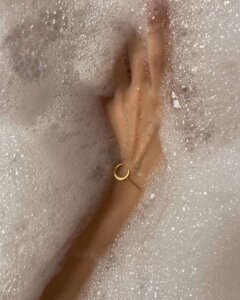Techniques for Body Relaxation

Welcome back, beauty enthusiasts! When it comes to soothing our bodies and promoting recovery, hot and cold therapy techniques have long been cherished for their effectiveness. Whether you’re looking to unwind after a stressful day or recover from an intense workout, incorporating hot and cold therapy into your routine can work wonders. In this blog, we’ll delve into the benefits of hot and cold therapy, explore various techniques, and guide you on how to harness their power for relaxation and recovery.
Understanding Hot and Cold Therapy
Hot and cold therapy involves using temperature variations to promote relaxation, relieve muscle tension, reduce inflammation, and accelerate recovery. Heat therapy, typically applied through warm towels, heating pads, or warm baths, helps to increase blood flow, relax muscles, and alleviate pain. On the other hand, cold therapy, involving ice packs, cold compresses, or cold baths, aids in reducing inflammation, numbing pain, and minimizing swelling. By alternating between hot and cold treatments, you can optimize the benefits of both therapies for maximum effectiveness.
Techniques for Hot Therapy
(a) Warm Compress: Soak a towel in warm water, wring out the excess, and apply it to the desired area. This technique is ideal for relieving muscle soreness, menstrual cramps, and joint stiffness.
(b) Hot Baths: Submerge your body in a warm bath infused with Epsom salts or essential oils. This method provides overall relaxation, relieves tension, and improves blood circulation.
(c) Heating Pads: Apply a heating pad to the affected area for targeted heat therapy. This technique is particularly beneficial for soothing backaches, menstrual cramps, and muscle sprains.
Techniques for Cold Therapy
(a) Ice Packs: Wrap ice packs or a bag of frozen vegetables in a thin cloth and apply it to the injured or inflamed area for around 10-15 minutes. This technique helps reduce swelling, numbs pain, and aids in post-workout recovery.
(b) Cold Compress: Soak a cloth in cold water, wring it out, and apply it to the affected area. This method is useful for treating minor burns, sunburns, and headaches.
(c) Cold Baths: Fill a bathtub with cold water and immerse yourself in it for a quick and invigorating cold therapy session. This technique is excellent for reducing body heat during hot summer days and improving circulation.
Incorporating Hot and Cold Therapy into Your Routine
To optimize the benefits of hot and cold therapy, it’s important to choose the right technique based on your needs. Start by assessing the condition you wish to address, whether it’s muscle soreness, inflammation, or general relaxation. For acute injuries or inflammation, it’s advisable to begin with cold therapy to reduce swelling. After a couple of days, you can transition to alternating between hot and cold therapy. Remember to listen to your body and avoid extreme temperatures or prolonged exposure to heat or cold.

Conclusion
Hot and cold therapy techniques have stood the test of time for a reason—they are simple yet powerful tools for body relaxation and recovery. By incorporating these techniques into your self-care routine, you can experience the rejuvenating benefits firsthand. Remember to consult with a healthcare professional if you have any pre-existing medical conditions or concerns. So, go ahead and harness the power of hot and cold therapy to relax, rejuvenate, and promote overall well-being.
As always, feel free to share your thoughts and experiences with hot and cold therapy in the comments section below. Stay relaxed, stay recovered, and embrace the power of temperature variations for a healthier you!
Note: Hot and cold therapy should be used with caution, and it is always recommended to seek professional medical advice when dealing with specific conditions or injuries.

